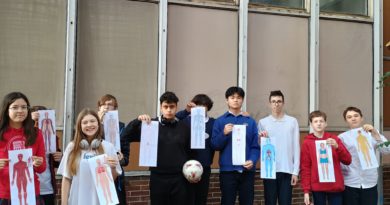Resolving Conflict and Building Resilience

During my Masters in Teaching the professor posed the following question to the class:
“Think of an adjective that starts with the first letter of your name that you think describes you well.”
The lecturer, who was coincidentally also called Rachel (or Raquel, as I was studying in Spain at the time), chose “resourceful”. Fiddlesticks. That was my one!
When it was my turn to speak I explained that my word was something I’ve been very fortunate to foster throughout my life, and something I deeply value in others.
“Resilient”
This trait has saved me from so many of the stresses and hurt that I see take their toll on family, colleagues, friends, and students, which is why I have always placed such emphasis on developing this in my classroom also.
In the last unit, we looked at hypothetical situations and how we can improve our reactions to social challenges.
One such hypothetical example was the following:
You miss the last shot in a game. The whistle blows and and your friends walk off the court without you.
“Noooooo! They can’t!” said 1 student.
“Well, they can…” I pointed out.
“No, the teacher needs to tell them don’t do that!”
“Well the teacher can ask them to be nice to their teammates, but she can’t tell them not to walk somewhere.”
This was a real a-ha moment in class.
Before now, students have been mostly taught that we all need to be best friends and give each other lots of hugs and invite everyone to their birthday parties. No criticism of this approach whatsoever, it certainly has its time and place. But the time for engaging with the concept of acknowledging human character flaws was now. And some of our students had some amazing ideas.
Solutions to conflict included: telling the person their behaviour is making you feel bad and asking them to stop, ignoring behaviours designed to annoy or provoke, asking an adult for support, making good decisions about who you choose as friends, using calming strategies like breathing, writing about how you feel, etc.
All different, and all good answers. We as adults know that “there is more than one way to skin a cat”, and an approach that works at resolving conflict with one person may not work for another. In the end, it almost always came down to communication. In the weeks following this activity, whenever conflict would arise I would always answer the start of a complaint with “Did you communicate with the person?”
9 out of 10 times this issue was extinguished on the spot.
1 out of 10 times, the student had employed their newfound social skills, but were unfortunately met with an unresponsive host. In these cases, students were always encouraged to seek teacher help.
This activity was followed by Control Circles – an exploration into things that are both within and outside of our control. This made for interesting conversations among parents as well, who admitted to struggling with these feelings also.
So you see, we’re not so different after all!




